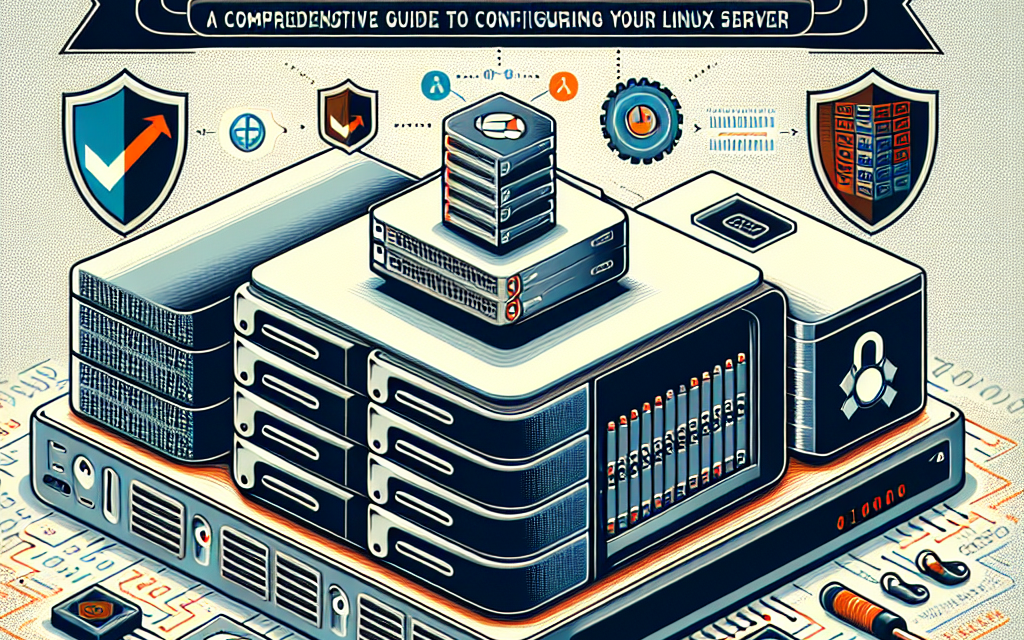In the realm of Linux security, Security-Enhanced Linux (SELinux) stands out as a crucial component, providing a robust mechanism for enforcing the separation of information based on confidentiality and integrity requirements. Developed by the National Security Agency (NSA) and maintained by the open-source community, SELinux is a powerful tool for ensuring your Linux server is resilient to security vulnerabilities. This comprehensive guide will take you through the essential steps to master SELinux and configure your Linux server effectively.
What is SELinux?
SELinux is a mandatory access control (MAC) security mechanism implemented in the Linux kernel. It enhances system security by restricting how processes can communicate with each other and access files. Unlike traditional discretionary access control (DAC), where users can set permissions for their files and resources, SELinux enforces security policies that users cannot override. This means that even if a user has permission to access a file, SELinux can deny access based on its defined policies, effectively limiting potential damage from compromised applications or services.
The Three Modes of SELinux
-
Enforcing Mode: This is the default mode where SELinux policies are enforced. Access requests that do not comply with the policy are denied, and the event is logged.
-
Permissive Mode: In this mode, SELinux does not enforce the policies but will log violations. This is useful for debugging and testing before moving to enforcing mode.
- Disabled Mode: In this mode, SELinux is turned off completely. It is not recommended for production systems.
Enabling SELinux
Before diving into the configuration, you need to ensure that SELinux is installed and enabled on your system. Most modern Linux distributions come with SELinux pre-installed.
To check the current status of SELinux, run the following command:
sestatusIf it shows that SELinux is disabled, you can enable it by editing the /etc/selinux/config file:
sudo nano /etc/selinux/configChange the line:
SELINUX=disabledto:
SELINUX=enforcingSave the file and reboot your server for the changes to take effect.
Understanding SELinux Policies
SELinux policies define the rules and security contexts of files, processes, and users. The SELinux policy consists of rules governing what actions are permissible. There are several different types of policies, but the two most common are:
-
Targeted Policy: This is the default policy on many distributions. It targets specific processes (daemons) while leaving others with the standard UNIX permissions.
- MLS (Multi-Level Security) Policy: More complex, this policy applies to environments that require strict security layers and is generally used in high-security environments.
Managing SELinux Policies
-
Viewing Current Contexts: Use the
ls -Zcommand to see the SELinux context of files and directories.ls -Z /path/to/directory -
Changing File Contexts: If you need to change the context of a file, use the
chconcommand. For example:sudo chcon -t httpd_sys_content_t /var/www/html/index.html -
Restoring Default Contexts: If you modify files or move them around, you may want to restore their default contexts using the
restoreconcommand:sudo restorecon -Rv /var/www/html
Troubleshooting SELinux
When SELinux is in enforcing mode, it can block actions that may be necessary for the operation of your server. To troubleshoot and resolve issues, follow these steps:
-
Check Logs: SELinux logs its violations in
/var/log/audit/audit.log. You can view these logs using:sudo less /var/log/audit/audit.log -
Use
audit2allow: This command reads the audit logs to suggest possible policy modifications to allow certain actions. For example:sudo cat /var/log/audit/audit.log | audit2allow -m mypol > mypolicy.teThis will generate a custom policy module that you can compile and load.
-
Review SELinux Boolean Settings: SELinux Booleans allow you to modify its behavior dynamically. You can list current Booleans using:
getsebool -aTo change a Boolean setting, use the
setseboolcommand. For example:sudo setsebool -P httpd_can_network_connect on
SELinux Best Practices
-
Use the Right Contexts: Ensure all your applications and files have the correct SELinux contexts to avoid unexpected denials.
-
Regularly Update Policies: Keep your SELinux policies updated to keep up with new applications and changes in your system architecture.
-
Test in Permissive Mode: If you are unsure about the effects of enabling SELinux, test your applications in permissive mode before enforcing policies.
-
Backup Your Policies: Regularly back up your custom SELinux policies and contexts to facilitate recovery if needed.
- Educate Users: Ensure that system users understand the implications of SELinux and how to work within its constraints.
Conclusion
Mastering SELinux requires time and practice, but the gains in security are incomparable. By strictly controlling access based on well-defined policies, SELinux serves as a formidable barrier against breaches, protecting both your data and your users. With the steps outlined in this guide, you should be well on your way to configuring your Linux server to leverage the full capabilities of SELinux. Embrace the challenge, and arm your server with the security it deserves!





